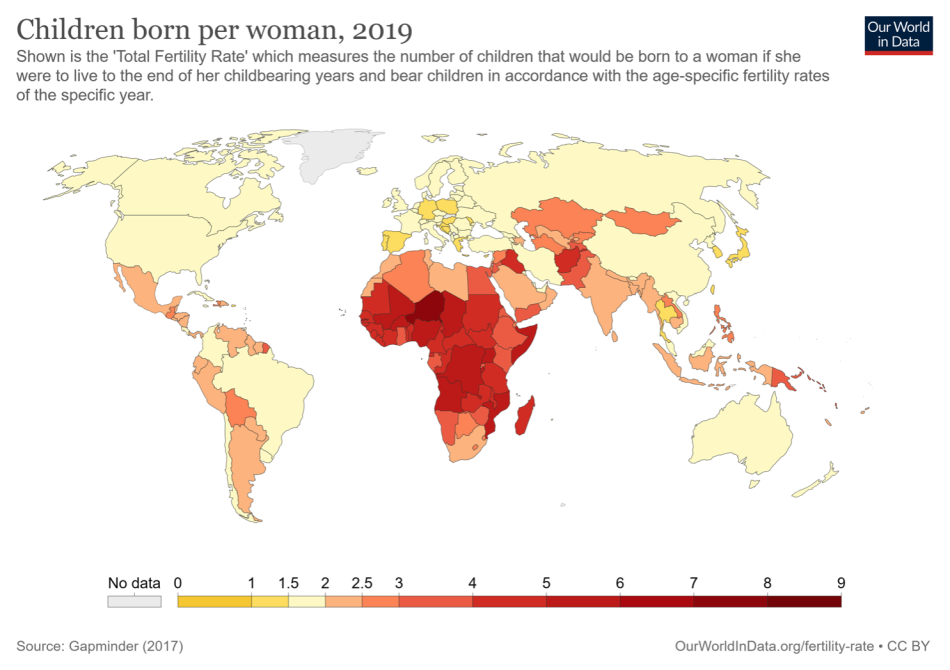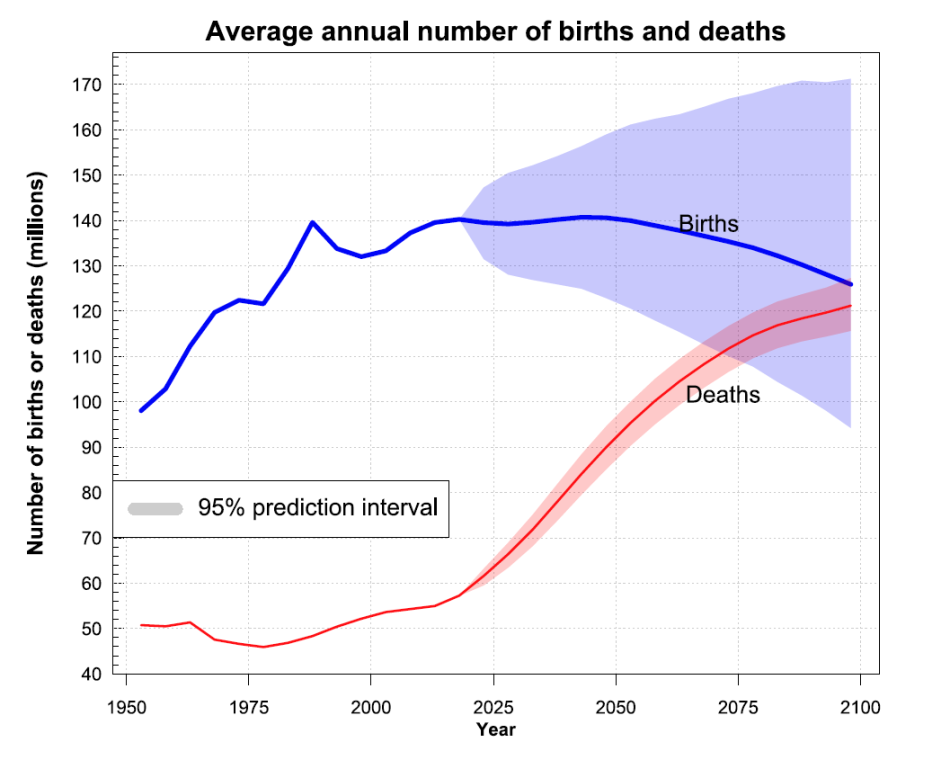The Century of Population
Excerpted from World Population Data Sheet, Population Reference Bureau
Washington, DC USA
The 20th Century began with 1.6 billion people in the world and we are approaching 8 billion now. Still every year the amount of the German population is added on top and every 5 years the population of Europe. This population growth occurs mostly in less developed countries.
Beginning in 1950, the rapid decline in death rates throughout the less developed world resulted in a growing population in Africa, Asia, and Latin America. This population "explosion" became one of the key international policy issues of the post-World War II period. With fertility rates in many countries still averaging six or more children and life expectancy continuing to improve, growth rates are such that populations in many countries will double in 20 years. Such growth will over-tax food supplies and outstrip countries' efforts to cope in many other areas.
Population Stabilization rests upon the sweeping assumption that Family Planning will continue to spread in less developed countries.

Children born per woman, 2019
Source: https://ourworldindata.org/fertility-rate
In the last century, family planning and reproductive health was virtually unknown in many less developed countries. Some "modern" contraceptive methods such as the pill, were only beginning to be accepted in Europe and North America. Today, family planning is widely used in diverse settings of less developed countries, in societies undergoing rapid economic development, as well as in the poorest rural areas. Many less developed countries lowered their birth rates in mere decades - much faster than any of the industrialized countries - and the population is still growing. How can that be?
Part of the answer lies in the age structure of the population. Past levels of high fertility have resulted in record high numbers of children in the youngest age range. When all these children reach childbearing age, even if they have fewer children than previous generations, population will still continue to grow. Total births will continue to exceed total deaths as these youth become parents. This century may well produce the ultimate size of world population. Global population growth could continue to slow, resulting in a stable but much larger number than today. We have the chance. It is up to us to use it.

United Nations, Department of Economic and Social Affairs, Population Division (2019). World Population
Prospects 2019, Volume II: Demographic Profiles (ST/ESA/SER.A/427).
Copyright © 2019 by United Nations, made available under a Creative Commons license (CC BY 3.0 IGO)
http://creativecommons.org/licenses/by/3.0/igo/
This transformation also provides the chance of a demographic dividend to the country: When there are many young working people in a population compared to the old not working people, the country could speed up in development. Harvesting this demographic dividend requires the access to education and Family Planning.
Links:
https://population.un.org/wpp/Graphs/1_Demographic%20Profiles/World.pdf
https://ourworldindata.org/world-population-growth
https://ourworldindata.org/fertility-rate
Population stabilization rests upon the sweeping assumption that Family Planning will continue to spread in less developed countries. |